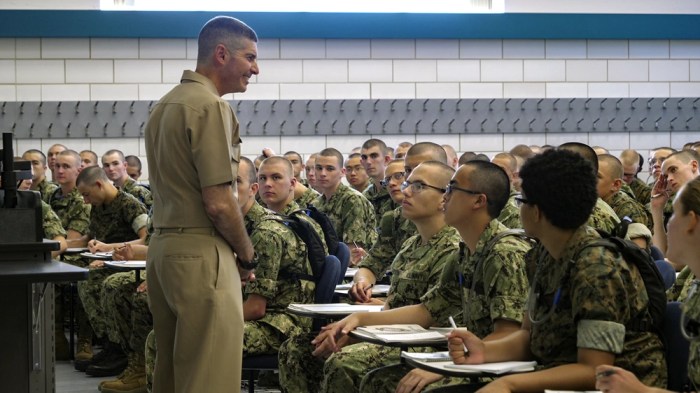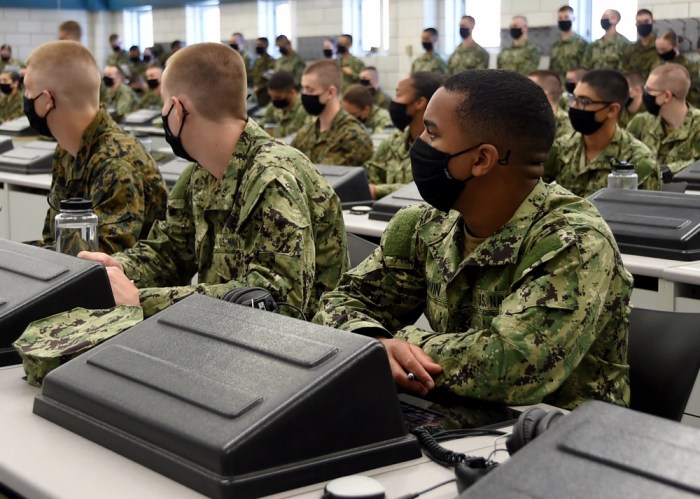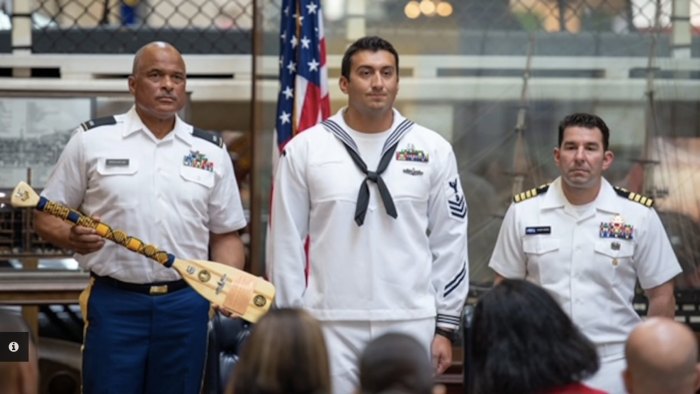Warrior toughness is designed to improve navy culture, setting the stage for an enthralling narrative that delves into the concept’s significance, historical roots, and multifaceted components. This transformative concept plays a pivotal role in shaping the physical, mental, and leadership qualities of naval personnel, ultimately contributing to the overall culture and operational effectiveness of the Navy.
The concept of warrior toughness has deep historical roots, tracing back to the earliest days of naval warfare. Throughout history, navies have recognized the importance of cultivating toughness and resilience in their sailors to withstand the rigors of combat and the challenges of the maritime environment.
Over time, training methods and philosophies have evolved to refine and enhance the development of warrior toughness, ensuring that naval personnel are equipped with the necessary physical and mental attributes to succeed in modern naval operations.
Warrior Toughness Concept

Warrior toughness is a fundamental concept in military culture, representing the physical and mental resilience of warriors. It encompasses the ability to withstand extreme physical and mental challenges, endure hardship, and maintain a unwavering focus on mission accomplishment. Warrior toughness is essential for success in military operations, as it enables warriors to operate effectively in demanding and dangerous environments.
In the Navy, warrior toughness is cultivated through rigorous training and discipline. Sailors are subjected to physically and mentally demanding exercises, designed to push their limits and build their resilience. These exercises include endurance training, combat drills, and survival scenarios.
Historical Roots of Warrior Toughness
The concept of warrior toughness has deep roots in the history of the Navy. From the early days of sailing ships, sailors faced harsh conditions and life-threatening situations. They developed a toughness and resilience that enabled them to endure long voyages, battle storms, and fight in hand-to-hand combat.
Over the centuries, the Navy has evolved its training methods and philosophies to enhance warrior toughness. In the modern era, training programs incorporate scientific principles and advanced technology to maximize physical and mental performance.
Physical and Mental Components of Warrior Toughness
Warrior toughness encompasses both physical and mental components. Physically, warriors must possess strength, endurance, and agility. They must be able to withstand extreme conditions, such as heat, cold, hunger, and fatigue.
Mentally, warriors must be resilient, disciplined, and focused. They must be able to overcome fear, doubt, and pain. They must also be able to think clearly and make sound decisions under pressure.
Leadership and Warrior Toughness
Leadership plays a critical role in fostering warrior toughness. Leaders must set the example by demonstrating toughness and resilience themselves. They must also create a culture that values toughness and rewards those who embody it.
Leaders can promote warrior toughness by providing challenging training opportunities, setting high standards, and recognizing the achievements of their sailors.
Warrior Toughness in Modern Naval Operations
Warrior toughness remains essential in modern naval operations. In today’s complex and dynamic environment, sailors may face threats ranging from conventional warfare to cyberattacks and terrorism.
Warrior toughness enables sailors to operate effectively in these challenging environments. It provides them with the physical and mental resilience to endure hardship, overcome adversity, and achieve mission success.
Warrior Toughness and Navy Culture
Warrior toughness is deeply ingrained in the culture of the Navy. It is a core value that defines the character of the Navy and its sailors. Warrior toughness contributes to the Navy’s reputation for excellence and professionalism.
The values, beliefs, and norms associated with warrior toughness include courage, discipline, self-sacrifice, and perseverance. These values are reflected in the Navy’s motto, “Semper Fortis,” which means “Always Courageous.”
Challenges and Opportunities in Cultivating Warrior Toughness
Cultivating warrior toughness in the Navy is not without its challenges. Sailors may face physical and mental barriers that hinder their progress. Additionally, the demands of modern naval operations can strain the limits of human endurance.
However, there are also opportunities to enhance warrior toughness. The Navy can leverage advances in training technology and scientific research to develop more effective training programs.
Best Practices for Developing Warrior Toughness, Warrior toughness is designed to improve navy culture
There are several best practices for developing warrior toughness in the Navy. These include:
- Rigorous physical training
- Mentally challenging exercises
- Realistic training scenarios
- Strong leadership
- Positive reinforcement
By implementing these best practices, the Navy can ensure that its sailors are equipped with the physical and mental toughness necessary to succeed in modern naval operations.
Measuring and Evaluating Warrior Toughness
Measuring and evaluating warrior toughness is essential for tracking progress and making improvements. The Navy uses a variety of metrics to assess warrior toughness, including physical fitness tests, mental health screenings, and performance evaluations.
These metrics provide valuable insights into the effectiveness of training programs and the overall toughness of the Navy’s sailors.
Clarifying Questions: Warrior Toughness Is Designed To Improve Navy Culture
What are the key components of warrior toughness?
Warrior toughness encompasses both physical and mental components, including physical fitness, endurance, resilience, mental fortitude, discipline, and adaptability.
How does warrior toughness contribute to naval culture?
Warrior toughness shapes the values, beliefs, and norms of naval culture, promoting courage, determination, self-reliance, and a strong sense of camaraderie.
What role does leadership play in fostering warrior toughness?
Leaders play a crucial role in promoting and reinforcing warrior toughness by setting high standards, providing mentorship and support, and creating a culture of accountability and excellence.


